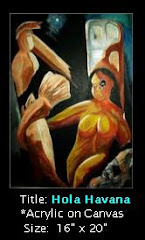Since it was first published in 1818, Mary Shelley’s Frankenstein: The Modern Prometheus has been a template for `science gone wrong’ horror genre.
Whether it is seeking to create a new human life from spare parts, or develop a new source of nuclear energy, or perhaps a radical cure for some disease . . . the deep seated fear over man delving into areas where he should not has become a staple of modern science fiction and horror.
Given that Halloween is upon us, I’ve a brief tour of freely available (public domain) radio, TV, and movie versions of the Frankenstein legend that you can download and enjoy this weekend.
First stop, a 1938 radio production of the Frankenstein story in 13 parts (each about 13 minutes). Faithful to the 1818 Mary Shelly book, you can find this collection on several free sites including:
We’ve a pair of TV adaptations of the story from the 1950s. First, the infamous Tales of Tomorrow Frankenstein episode, broadcast live in the early 1950s.
Over the years, the retelling of the story has embellished it a bit, but it is an example of how things didn't always go as planned during a live broadcast.
The legend is that Lon Chaney Jr., under the influence of alcohol, thought that they were doing a dress rehearsal, and not a live broadcast. During his `rampage scene' in the first half of the show, instead of busting up props, he picked them up and then set them down carefully.
For whatever reason, Chaney does pick up, and set back down, a number of props - particularly in the first half of the show.
Tales of Tomorrow #16: Frankenstein (1952)
Six years later, up and coming Hammer Studios and Universal teamed to produce a pilot for a TV show to be called `Tales of Frankenstein’, which utilized stock footage from old Universal horror movies of the 1940s to reduce production costs.
While certainly a cut above the Tales of Tomorrow version, the pilot was never sold.
Tales Of Frankenstein (The Face In The Tombstone Mirror) - Pilot
As an example of the cost cutting measures employed, the disembodied head that narrates the opening to this episode was lifted from an old Inner Sanctum movie, and so the lip movements don’t sync with the narration.
Some websites list a second `pilot’ for this series as `Jack the Ripper’, but that appears – instead – to be an episode from The Veil.
And lastly, a couple of suitably `cheesy’ Frankenstein movie sequels can be found on The Internet Archive.
Frankenstein's Daughter - 1958
Lady Frankenstein - 1971
Be warned: Neither of these two movies is likely to win any artistic awards, but then, there’s a reason they’ve fallen into the public domain.
Enjoy.










